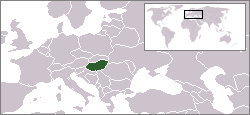Re: Beetaloo trivia
in response to
by
posted on
Feb 25, 2009 03:22PM

Developing large acreage positions of unconventional and conventional oil and gas resources

>It all started back in 1999.
Interesting piece of information Lanman. It takes many years from the discovery of a prospect to an actual exploration.
Wikipedia has a Mako trivia....
It all started in the 1960's.
The Makó gas field is a large gas field next to Makó, in southeastern Hungary. Since 1960's it was well known that a large gas field existed next to Makó. The disadvantages are the depth of the gas, at cca. 5000 meters, and the large thermal increase with depth in Hungary (about 20 meters/Celsius compared to a world-average 50 meters/Celsius). Only highly advanced technology made the extraction recently possible. Canada's Falcon Oil & Gas company have bought the possibility for extraction from the Hungarian State for the next 40 years in 2005, and started test extractions in 2006, with 327 barrels of Light crude oil and 110.000 cubic meters of Natural gas daily. In 2008 April, Exxon Mobil signed a contract of cooperation of the extraction with 75 million US dollars, and in case of successful co-work, later 150 million US dollar more. By 2008 April, 6 extraction units were online. Currently 1 bcm (billion cubic meters) per year extraction is achievable. But Falcon plans to make 10-15 more extraction units online by 2010-2011. First estimates were of about 600 bcm of proven reserves, but recently estimates rose to about 1550 bcm of gas. In this case, Makó gas field could be on a par with the largest fields of Central Asia or the Groningen gas field in Netherlands.Makó gas field
From Wikipedia, the free encyclopedia
Jump to: navigation, search
Makó
Country:
![]() Hungary
Hungary
Coordinates:
 46°12′54″N 20°28′32″E / 46.215°N 20.47556°E / 46.215; 20.47556
46°12′54″N 20°28′32″E / 46.215°N 20.47556°E / 46.215; 20.47556
Offshore/Onshore:
Onshore
Operators:
Falcon Oil & Gas, Exxon Mobil

Field History
Discovery:
1960s
Start of production:
2006
Production
Current Production Gas (Mcfd):
1 billion m³ per year
This article needs additional citations for verification. Please help improve this article by adding reliable references. Unsourced material may be challenged and removed. (April 2008)